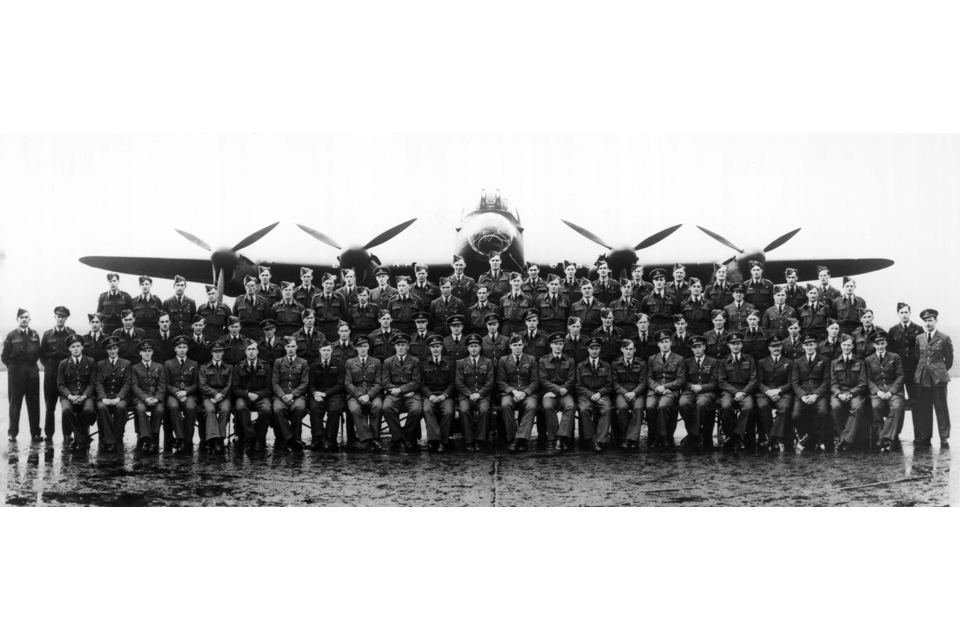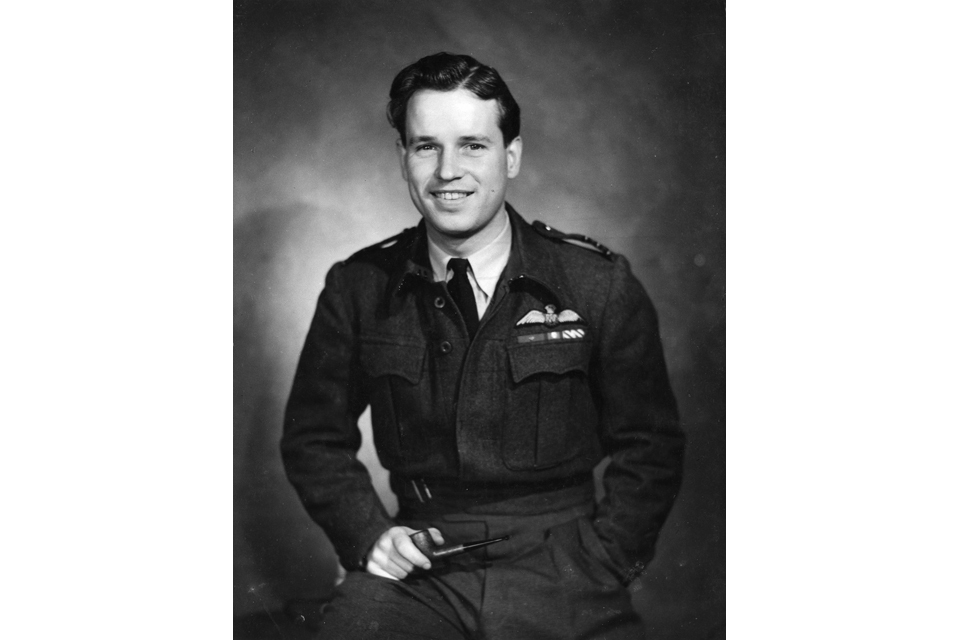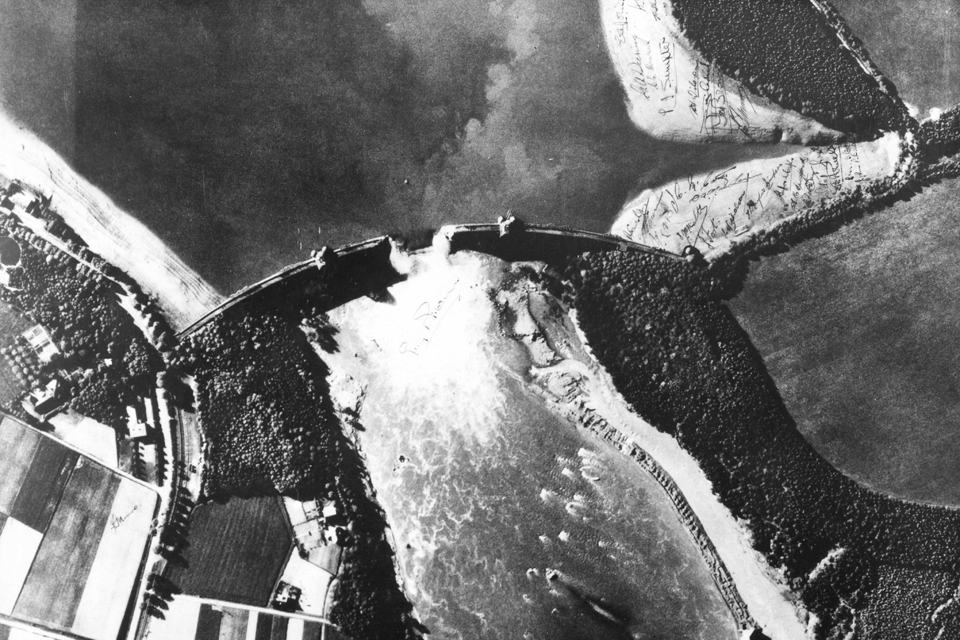Dambusters raid remembered
To mark the 70th anniversary of the Dambusters air raid of 16 to 17 May 1943, a series of events is taking place around Britain.

The Royal Air Force Battle of Britain Memorial Flight's Lancaster bomber sweeps low over the Derwent Reservoir in Derbyshire to commemorate the 70th anniversary of the Dams Raid [Picture: Senior Aircraftwoman Helen Farrer, Crown copyright]
Special events taking place today, 16 May, to commemorate the daring night-time raid on dams in the Ruhr Valley in Germany during the Second World War, include a flypast by a Lancaster bomber of the RAF Battle of Britain Memorial Flight at Derwent Reservoir and the Royal British Legion creating a ‘field of messages’ at the National Memorial Arboretum in Alrewas, Staffordshire.
There will be a sunset ceremony at RAF Scampton near Lincoln and another flypast.
Derwent Reservoir was one of the sites where pilots from 617 Squadron – specially stood up to mount the raids – practised low flying ahead of their daring mission to attack the dams which provided hydroelectric power for the Ruhr area and water for German industry.
The idea for the raids came when Dr Barnes Wallis realised that a target didn’t necessarily need to be directly hit, but could be destroyed by the shockwave produced by the explosion of a large bomb.

Members of 617 Squadron photographed at RAF Scampton after the Dams Raid in May 1943 [Picture: Crown copyright]
His simple and effective solution was for a weapon to bounce on the surface of the water, similar to a stone skimming across the surface of a lake, before eventually sinking.
Through sheer persistence, Wallis convinced the powers-that-be that the project was viable, despite Air Marshal Sir Arthur Harris of Bomber Command deriding the project as ‘tripe of the wildest description’!
Led by Wing Commander Guy Gibson, a 25-year-old officer with an outstanding reputation, 617 Squadron practised flying missions all over Britain at dangerously low heights of as low as 50 feet. Once comfortable in the low-level environment, the aircrew practised by ‘attacking dams’ in the Peak District, including Derwent.
The top-secret mission, codenamed ‘Operation Chastise’, called for the aircraft to strike dams in the industrial heartland of Germany. In total, 19 Lancaster bombers crewed by 7 men each departed on 16 May 1943.
70th anniversary Dambusters flypast of the Derwent Dam in Derbyshire, UK
The targets were the Möhne, Eder and Sorpe dams in the Ruhr Valley, and they successfully breached the Mohne and Eder dams and damaged the Sorpe.
After the raid, the 11 surviving Lancasters returned to their home station of RAF Scampton. The operation was successful but came with a heavy cost: 53 men were killed, 3 became prisoners of war and 8 aircraft were lost.
As a result of the raid, more than 1,650 lost their lives in Germany, including an estimated 1,026 foreign prisoners of war and forced labour camp inmates.
Of the returning aircrew, 33 were decorated, while Wing Commander Gibson saw his outstanding bravery and leadership rewarded with the Victoria Cross.

Portrait photograph of Wing Commander Guy Gibson taken by Gordon Anthony for the book 'Air Aces', first published in 1944 [Picture: via MOD]
Of the 133 men who flew on the mission only 1 pilot, Les Munro, is still alive.
The Dams Raid was later immortalised in the 1955 film and 617 Squadron, now known as ‘The Dambusters’, continued its tradition of precision bombing against the hardest targets imaginable – flying Canberras and Vulcans before converting to the Tornado in 1983.
From the sinking of the German battleship Tirpitz during the Second World War though to Operation Telic in Iraq and Operation Herrick in Afghanistan today, 617 Squadron is the most famous squadron in the RAF.

An aerial reconnaissance photograph taken on 17 May 1943 showing the breach in the Mohne dam caused by 617 Squadron's raid the previous night, which has been signed by the surviving crew members on the newly-visible reservoir edge [Picture: via MOD]
Having now flown the Tornado for 30 years, 617 Squadron will tour the UK during their 70th anniversary with a specially-painted aircraft to mark the Dams Raid and remember the sacrifices made by their forefathers, before again deploying to Afghanistan in November.
Also, in ‘The Dambusters: 70 Years On’ on BBC2 at 7pm this evening, Dan Snow presents live coverage from RAF Scampton of a tribute to the aircrews involved in the Dams Raid over Germany.
Updates to this page
-
Added video
-
First published.